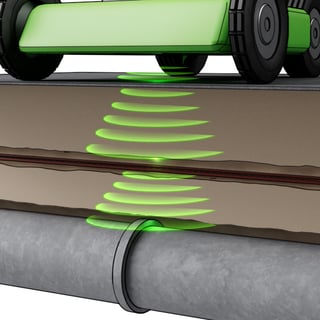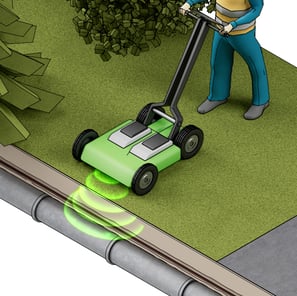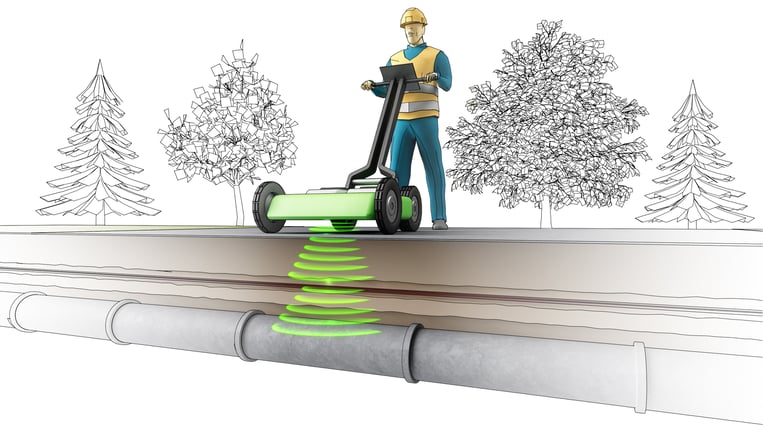Utility locating is the process of locating and marking buried utility lines, including gas and sewer lines, phone cables and others. Operators use locating equipment and sensors to determine the location of utilities, then use markers such as chalk and spray paint to map where utilities are underground. The main goal of locating services is to ensure utility damage prevention.
What Is Ground Penetrating Radar?
Ground penetrating radar is a technology commonly utilized in utility locating to identify both conductive and nonconductive utilities. Like most utility locating technologies, ground penetrating radar equipment consists of a transmitter and a receiver. It works by emitting high-frequency radio waves into the ground. When these waves hit a buried utility, they reflect off of the object and are collected by the equipment’s receiver. The receiver’s software then translates these signals into a rendering of the object belowground based on the object’s physical and chemical properties. This rendering allows locators to map where buried utilities are, ensuring that they aren’t damaged during future construction or excavation. 
Ground penetrating radar tools are typically used with electromagnetic (EM) profiling locator equipment, which locates conductive utilities. Like ground penetrating radar, EM equipment’s transmitter emits a specific electromagnetic frequency into the ground. Once this frequency is transmitted through a metallic utility, the receiver records and traces out the utility’s location. EM equipment is sometimes easier and faster to operate than ground penetrating radar equipment is. And while ground penetrating radar is a good way to locate utilities, it does require a skilled operator to accurately identify the many different kinds of buried assets.
Major Benefits of Ground Penetrating Radar Utility Location
Find Conductive and Nonconductive Utilities
One of the major benefits of ground penetrating radar utility location is that this technology can find both conductive and nonconductive utilities. Other common locating equipment, such as EM locators and radio frequency locators, can only locate conductive materials.
Ground penetrating radar also has the unique ability to locate small objects belowground and determine their depth, and can even find cavities or voids. Ground penetrating radar utility location broadens the scope of underground object detection.
Utilize a Non-Invasive Approach
Another benefit of ground penetrating radar utility location is that it’s non-invasive; it requires no digging and does not disturb anything above ground, making it an ideal method in nearly any locating scenario. Pavement, existing structures, landscaping and any other surface features can all be preserved, limiting damage and disruption for customers.
Save Money, Energy and Resources
In addition, ground penetrating radar utility location, like all effective utility location methods, saves money, energy and resources. Utility locating helps protect underground assets from inadvertent strikes and damage during digging, therefore protecting public safety. Damage to buried utilities during digging can result in service disruptions, construction delays, or disaster. Ground penetrating radar is a helpful tool in reducing the risk of accidental utility strikes.
Want to learn more about utility locating? Get your free copy of Envirosight’s utility markings poster to cement your understanding of marks and symbols commonly used by utility locators.


